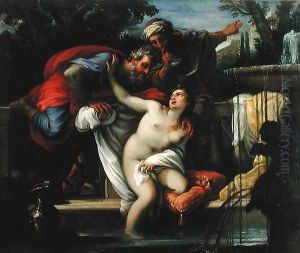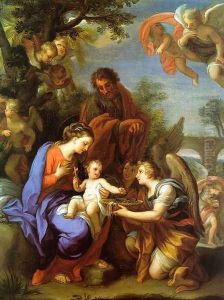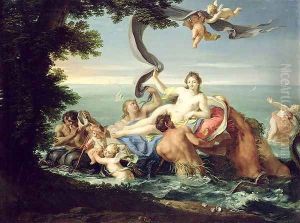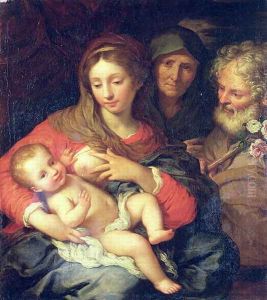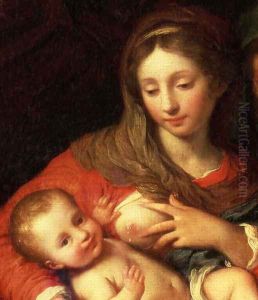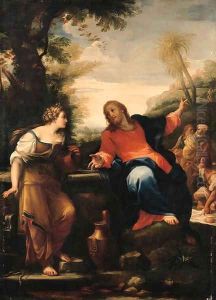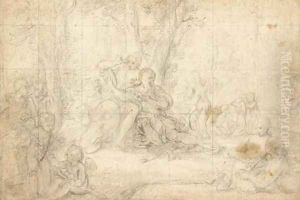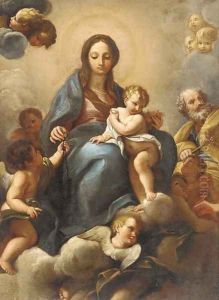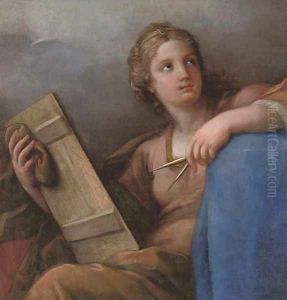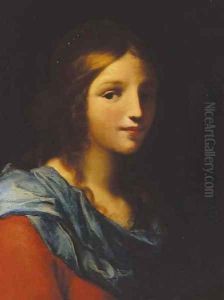Giuseppe Chiari Paintings
Giuseppe Chiari was an Italian painter of the late Baroque period active primarily in Rome. Born in 1654 in Rome, he became one of the followers of the prominent artist Carlo Maratta, who was a leading figure in the Roman art scene at the time. Chiari's style was heavily influenced by Maratta's classical approach, which is characterized by its clarity, balance, and moderation.
Chiari specialized in religious and mythological subjects, with a penchant for graceful compositions imbued with a serene and gentle spirit. He was particularly adept at large frescoes and altarpieces, where his skill in creating harmonious and elegant figures was on full display. Some of his notable works include frescoes in the churches of Santa Maria in Via Lata, Sant'Andrea al Quirinale, and the dome of the church of Santi Apostoli in Rome.
Aside from his painting career, Chiari also held important positions throughout his life, serving as the Principe of the Accademia di San Luca, the prestigious academy of artists in Rome, from 1699 to 1702. He was a respected teacher as well, with many students coming to study under his guidance.
Chiari's work was appreciated for its refinement, and he enjoyed the patronage of several significant figures of his time, including the powerful Barberini and Colonna families. He also received commissions from the papal court and was involved in decorating the Vatican.
Despite his success, Giuseppe Chiari's work was somewhat overshadowed by the dominant figures of the High Baroque, such as Bernini and Pietro da Cortona, and later by the rise of the Rococo style. He passed away in 1727 in Rome, where he left a lasting legacy in the form of the numerous frescoes and paintings that adorn the city's churches and palaces. His style represented a transition from the high drama of the Baroque to the more decorous and restrained Rococo that would become popular in the 18th century.
